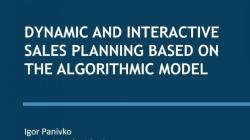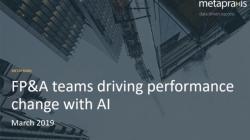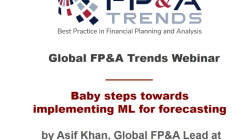In a recent ACCA survey about the future of the accountancy professional, digital is listed as one of the 7 quotients for success. ACCA defines digital as “the awareness and application of existing and emerging digital technologies, capabilities, practices, strategies and culture”. One of the more talked about area in technology is artificial intelligence. This article attempts to explore whether artificial intelligence can replace people in the FP&A arena.
At the fifth AI/ML FP&A Committee meeting, Igor Panivko, FD & MD at Konica Minolta, talked about dynamic and interactive Sales Planning based on the algorithmic model. He shared his experience in harnessing data in FP&A and how the company tried to solve some of the challenges which are typical for the finance function.
Xavier Fernandes, Analytics Director at Metapraxis, talks about how FP&A teams are using AI to drive changes in business performance. Xavier also mentions a couple of examples where FP&A teams were faced with ongoing disappointing business performance and what AI approach they chose.
Machine Learning provides tremendous insight regarding market trends & business drivers. These factors include market propensity, consumer demand, economic factors, weather, & transportation costs. Many companies take these variables into consideration but provide limited or time-consuming analysis. This process limits corporate agility.
In the video, Asif Khan, Global FP&A Lead at PayU, shares 5 steps of implementing ML for fore
Takeshi Murakami, Group Controller at Microsoft, shares an interesting case study on leveraging AI/ML in decision-making. Microsoft Finance enhanced forecast accuracy by using ML instead of the traditional bottom-up process.
Pagination
Subscribe to
FP&A Trends Digest

We will regularly update you on the latest trends and developments in FP&A. Take the opportunity to have articles written by finance thought leaders delivered directly to your inbox; watch compelling webinars; connect with like-minded professionals; and become a part of our global community.








